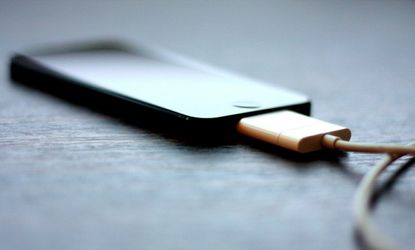Can a charging iPhone electrocute you?
Apple is investigating the death of a young Chinese woman who was apparently electrocuted when she tried to answer a phone call

The Wall Street Journal reports that a 23-year-old Chinese woman was recently electrocuted while trying to answer her iPhone as it was charging.
According to Xinhua, China's official state-run news agency, the young woman, Ma Ailun, had an "obvious electronic injury to her neck" upon an "elementary inspection" by investigators. "We are deeply saddened to learn of this tragic incident and offer our condolences to the Ma family," Apple said in a statement. "We will fully investigate and co-operate with authorities on this matter."
Ma had apparently left her bath to go answer a call when the mishap occurred, but the details beyond that are a bit murky. A woman who identified herself as the victim's sister on Sina Weibo says Ma purchased her iPhone back in December, but other details like the exact model and what kind of charger she was using are a matter of contention.
Subscribe to The Week
Escape your echo chamber. Get the facts behind the news, plus analysis from multiple perspectives.

Sign up for The Week's Free Newsletters
From our morning news briefing to a weekly Good News Newsletter, get the best of The Week delivered directly to your inbox.
From our morning news briefing to a weekly Good News Newsletter, get the best of The Week delivered directly to your inbox.
The question of whether someone can be electrocuted while answering a plugged-in cell phone, however, is an old rumor that dates back to the days of hokey, viral email forwards. While multiple sources, including Snopes (which is dedicated to this kind of debunkery), have long pegged the urban legend as false, there have been isolated instances of people actually being electrocuted. The last known instance, according to Gizmodo, took place in India in 2011, when a man was electrocuted to death when he answered a cell phone connected to a cheap, knock-off charger.
Normal chargers that come bundled with your smartphone, however, don't pose an inherent danger. CNN reports that the likelihood of being electrocuted by a smartphone, even when it's connected to an electrical outlet, is still "very, very low." Most phone chargers that connect via a USB have a supply voltage of about 5 volts, which is "not enough to severely harm a person."
So what could have happened in Ma's case? It's possible that faulty electronics from shoddy, third-party goods (like a wall charger) may have factored into her electrocution. The Guardian notes that it may have had something to do with the extremely warm weather's effect on her home's electrical equipment:
The climate in Xingiang can become extremely hot during summer, which could contribute to overloads and failures of electrical insulation and equipment. The leads from a phone charger to the phone itself typically carry 5V and around 1A. However, a current of more than 200mA (0.2A) can be lethal if it passes through the heart. If the charger is not earthed, or if the person taking the call provides a better path for current — say from a damaged wire — then the effect could be lethal. [Guardian]
Another possibility is that Ma may have been dripping wet from her bath when she touched the device, and experts note that having wet skin can lower a person's natural resistance to electrical shock.
Sign up for Today's Best Articles in your inbox
A free daily email with the biggest news stories of the day – and the best features from TheWeek.com
While Ma's story is horrifying and tragic, your odds of dying via smartphone electrocution are, thankfully, still really slim.
Create an account with the same email registered to your subscription to unlock access.
-
 The week's best photos
The week's best photosIn Pictures A flooded island, a ballistic missile, and more
By Anahi Valenzuela, The Week US Published
-
 Who actually needs life insurance?
Who actually needs life insurance?The Explainer If you have kids or are worried about passing on debt, the added security may be worth it
By Becca Stanek, The Week US Published
-
 Sexual wellness trends to know, from products and therapies to retreats and hotels
Sexual wellness trends to know, from products and therapies to retreats and hotelsThe Week Recommends Talking about pleasure and sexual health is becoming less taboo
By Theara Coleman, The Week US Published